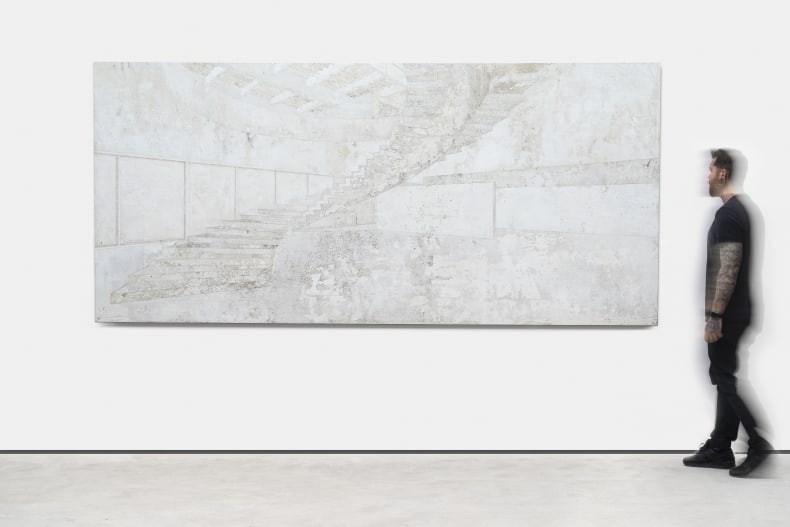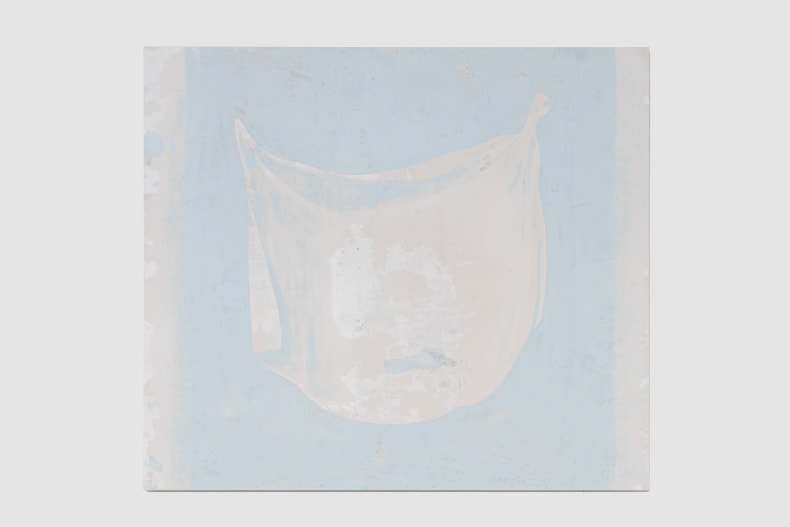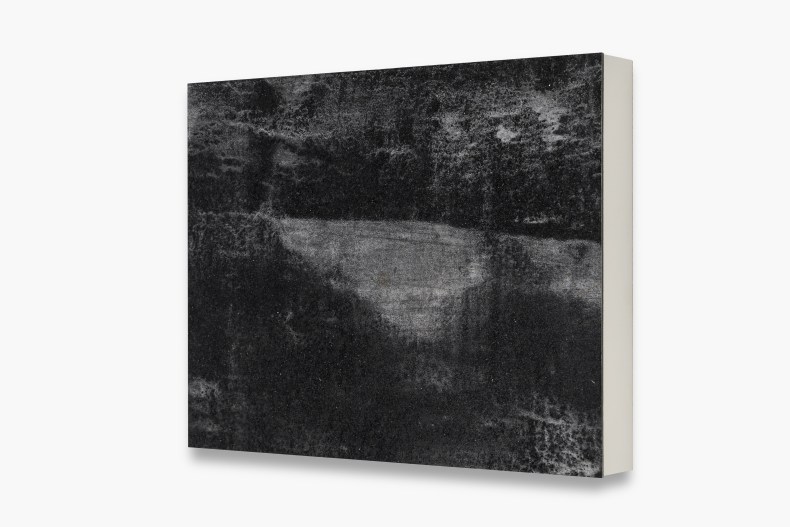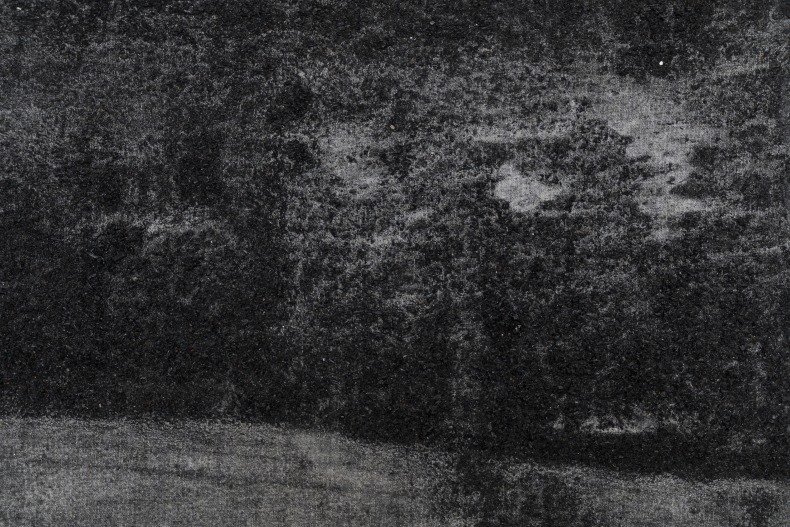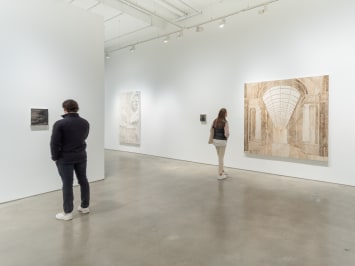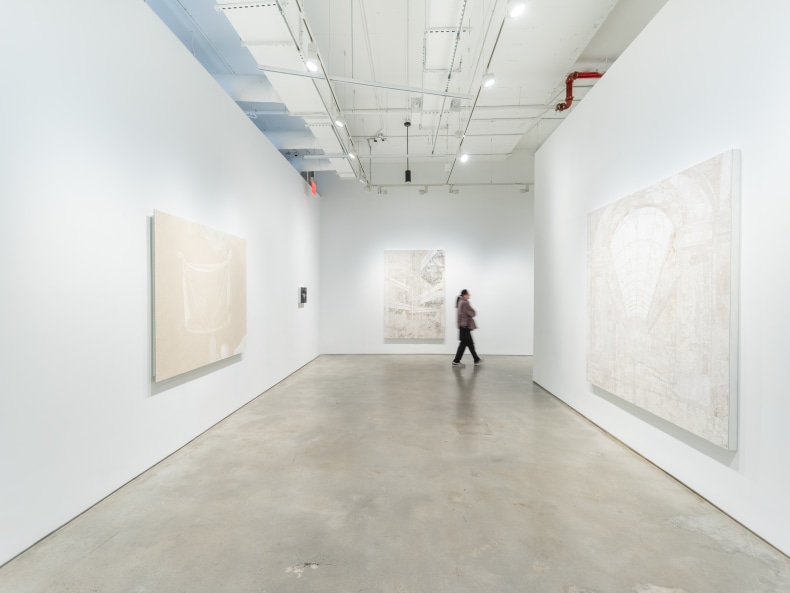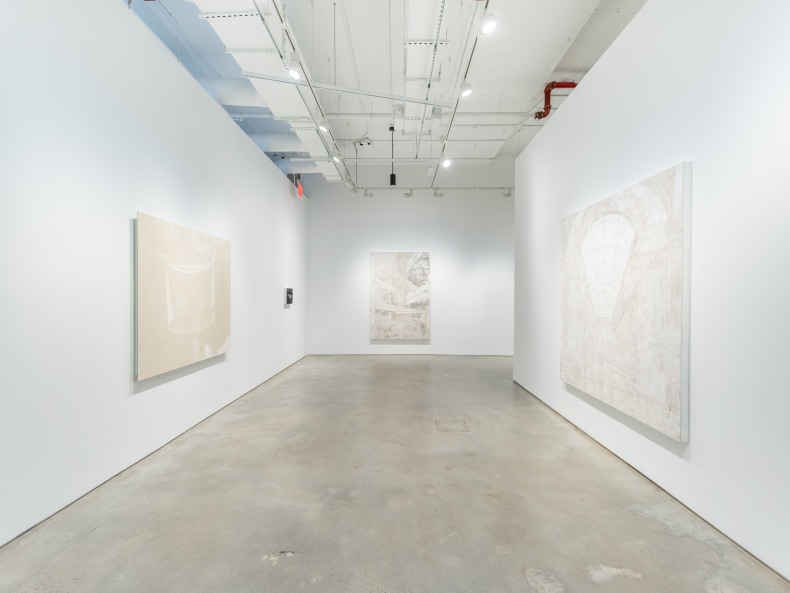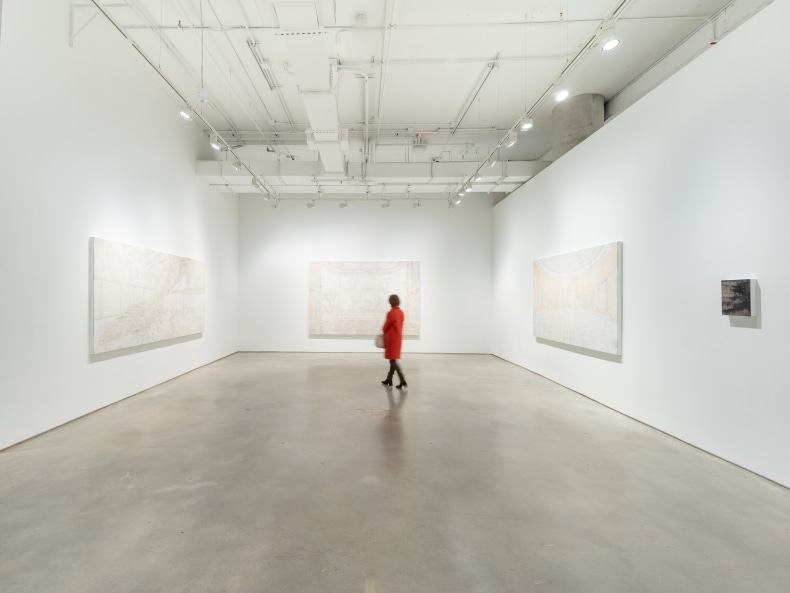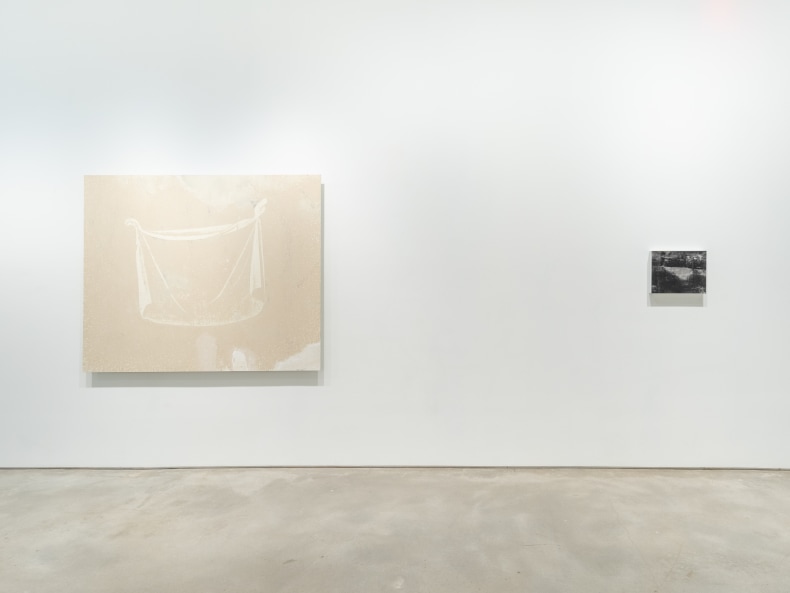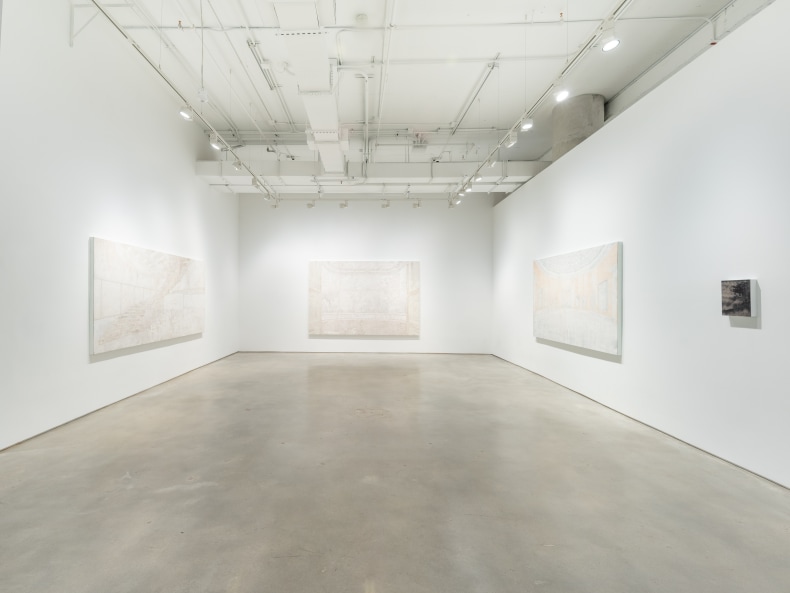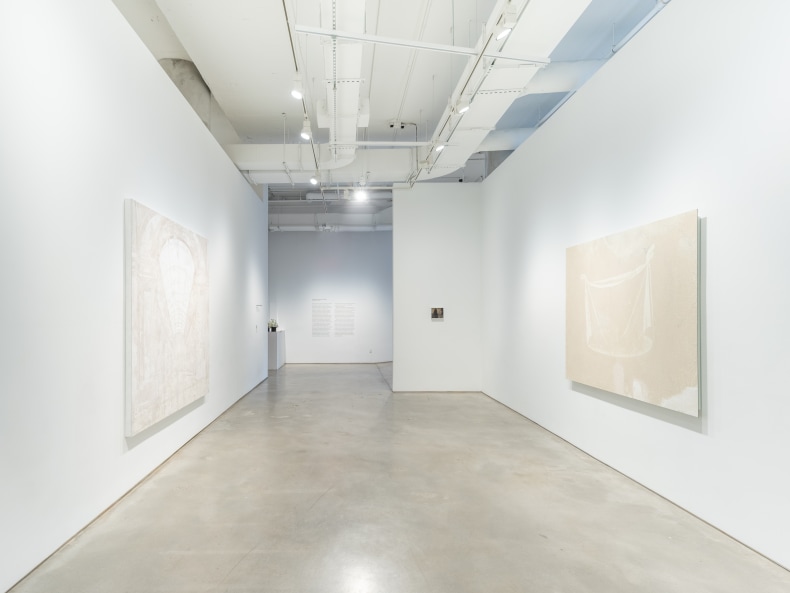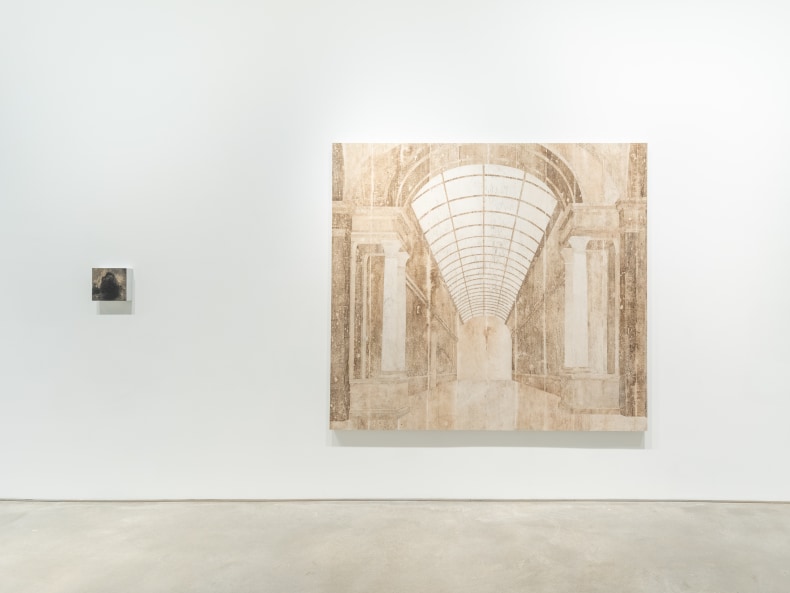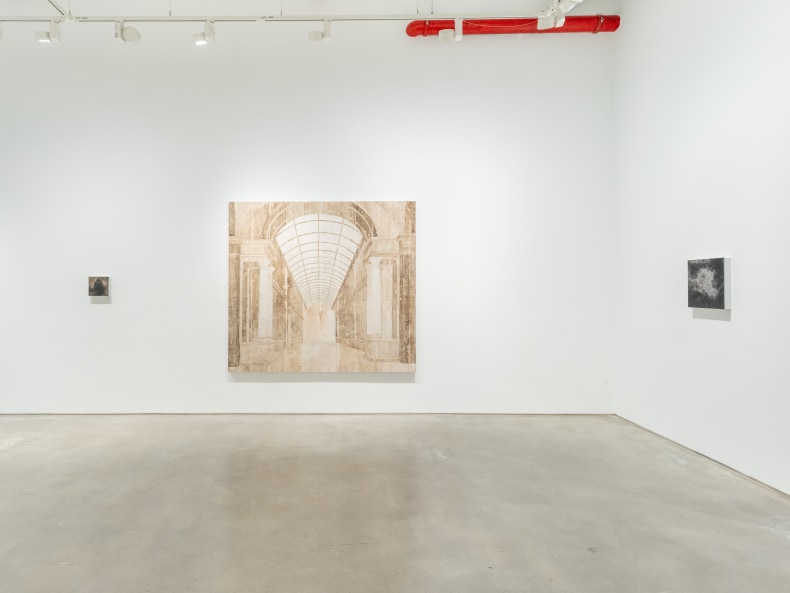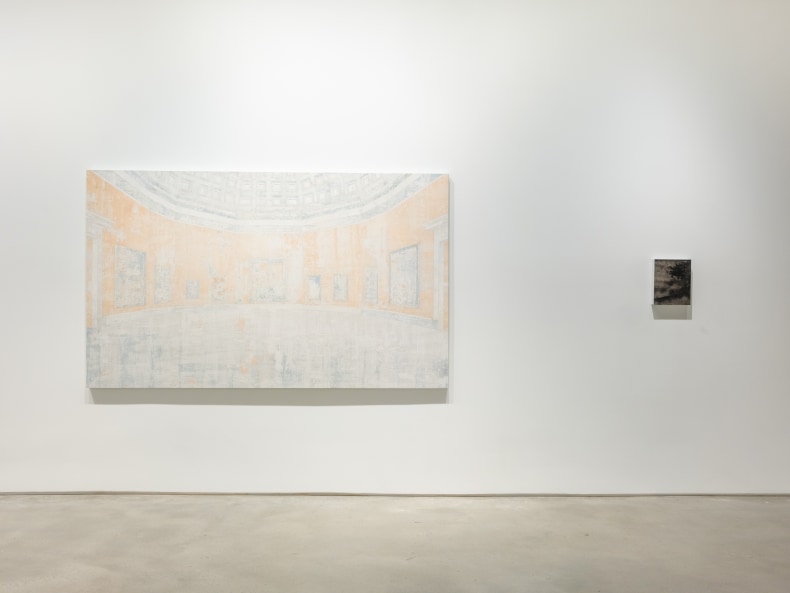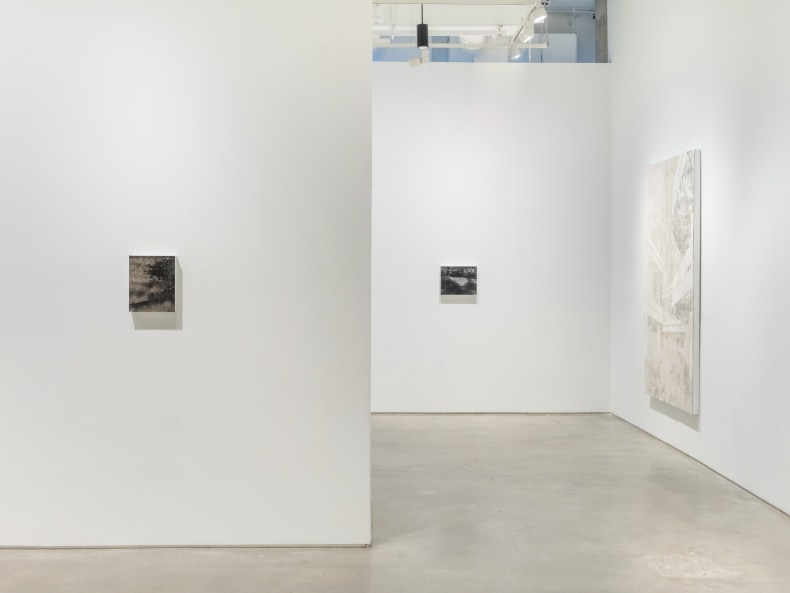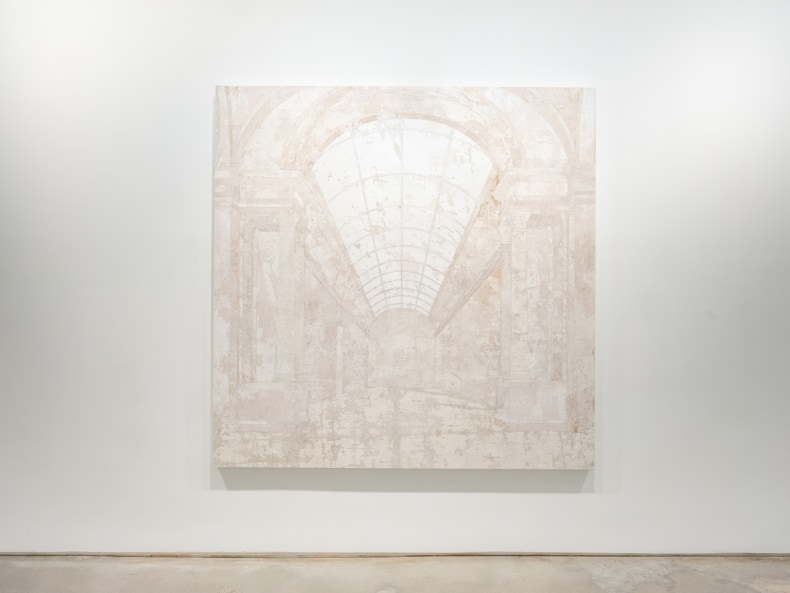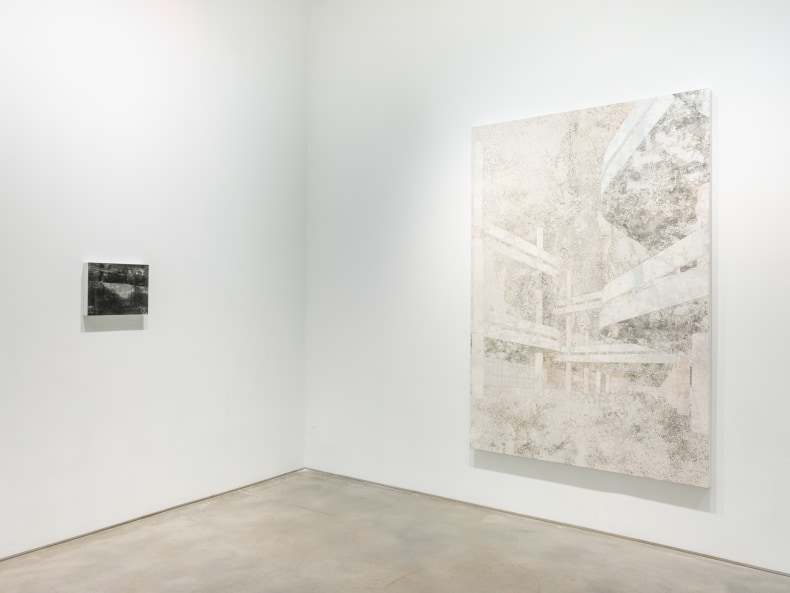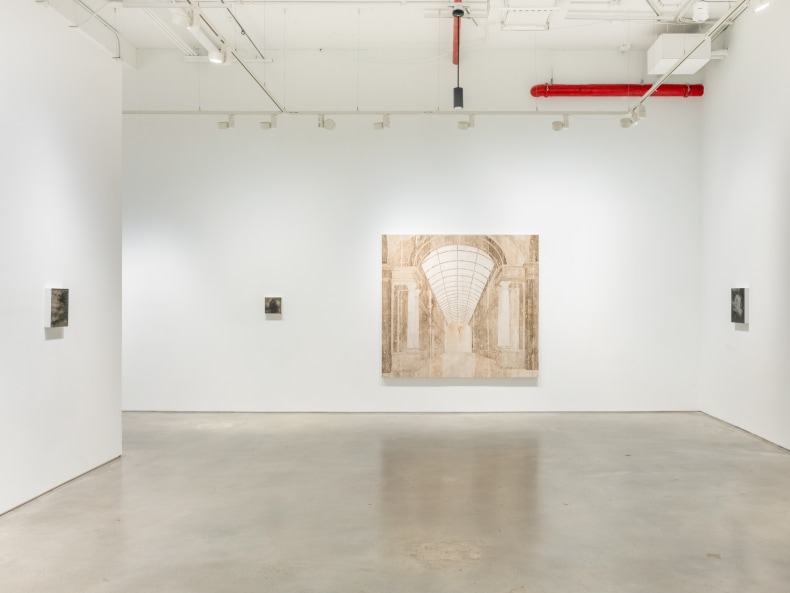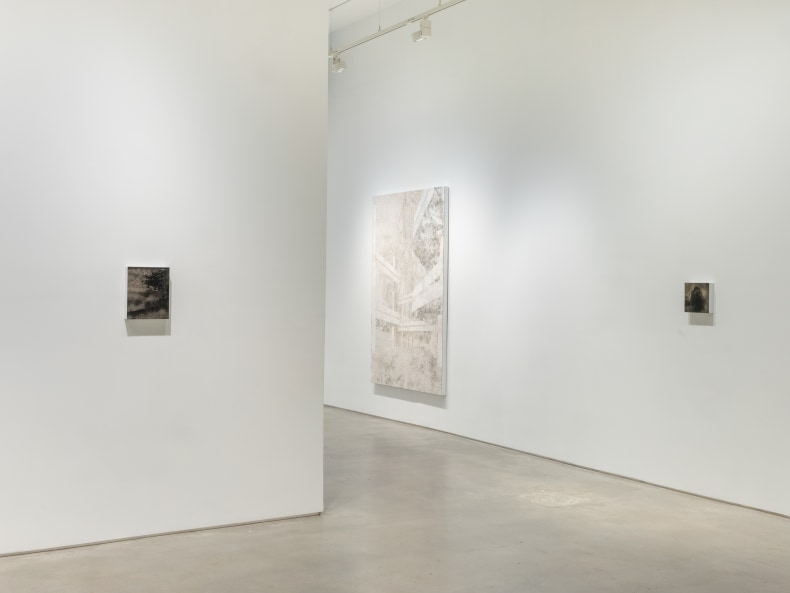Nara Roesler New York is pleased to present The Site of Images, a solo exhibition by Brazilian artist Daniel Senise curated by Luis Pérez-Oramas that brings together three different series of works produced by the artist between 2020 and 2023.
Daniel Senise (b. 1955, Rio de Janeiro, Brazil), a leading contemporary Brazilian painter and a significant member of Generation 80, has since produced a major body of work addressing painting beyond the traditional brush-stroke-over-canvas convention Since the end of the 1990s, Senise’s practice can be described as a ‘construction of images.’ His process begins with imprinting the textures of surfaces – such as wooden floors or concrete walls – from carefully chosen locations into textiles, using a technique similar to the monotype. This material becomes then the structural base of the work, either as a canvas to be worked on as a collage puzzle, including fragments added to printed photographs in order to create the final image. Frottage, imprinting, tracing, cutting and pasting, and residual texturing are part of the process from which brush and brush-stroke are willfully excluded. In that sense, Senise’s works conceptually mimic an ancient type of image known as acheiropoieta, meaning images produced without the painter’s hand.
Senise's repertoire often relates to the memory of places and spaces. He therefore intertwines the representation of a site, with its debris, or in other words, its history –he juxtaposes time, memory, and the physical presence that stems from them. For the current selection of works that constitute The Site of Images–the latest developments from the series Museums and Galleries–it is the painter's studio, its concrete materiality as dust and debris which becomes the structural spine of images representing empty and monumental museum spaces. When the framed pictures that are usually shown in them are depicted in his paintings they happen to be erased. From the site of images, Senise's works only show the site itself, the haunting void of the museum or the poignant structure, almost funeral, of their architecture.
It is telling that Daniel Senise has included, among the works depicting phantom images of museum's interiors, an example of his series devoted to the Vera Icona, the famous linen cloth where the face of Christ was miraculously imprinted. A sacred site of images for Christians, the Vera Icona is also a theoretical object enlightening the power, and the paradoxes, of images. Also, a picture made without human intervention–the very model of acheiropoieta–a prodigious image transfer, resonates with the large paintings carrying by their contact with walls and floors of the artist's studio the materiality, the fragment-relic of images. The object served as inspiration for several painters throughout the history of art. It is these representations, by artists such as El Greco and Zurbarán, that serve as the foundation for Senise take on it.. The artist adapts these original compositions, recreating them, but without including the face of Christ, so that the focus is on the brackets that support the image, its very material site.
In the third group of works that are part of the exhibition, the artist highlights one of the fundamental techniques of his practice: the monotype of surfaces. Using a mixture of water and glue spread over the flooring of a determined space, the artist manages, with a cloth, to impress the markings to create surfaces stamped with the colors and signs of the place. Accidental images, their power of representation entirely lays on chance and subjective perception. These images, literal in their non-mimetic materiality, complement the ambitious body of abyssal images depicting museums: emptied abysses of images, the museums depicted by Senise are also images of images, images containing (erased) images, as the Vera-Icona itself: the endless site of images.
